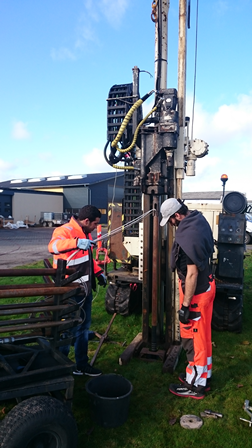WP3 Redox interface
WP-leader: Jens Christian Refsgaard
Based on existing data and knowledge, a national map of the redox interface, marking the transition from aerobic to anaerobic conditions, has been developed for Denmark. However, direct observations of the redox condition from boreholes are sparse and the scale of the national redox map is coarse (1 km grid scale). Detailed studies have showed that the depth to the redox interface can vary significant within a few hundred meters, and numerous measurements are therefore needed to fully resolve its location and spatial variation for different hydrological settings.
Observations of the redox conditions have up to now been based on borehole data, i.e. sediment colours, sediment samples or water samples. Boreholes are, however, expensive and new innovative and cost-effective methods are needed to measure the redox conditions in the subsurface. In TReNDS scientists will work with the following two hypotheses:
Hypothesis E: A new field instrument can be developed for cost-effective local scale measurements of the depth to the redox interface in the groundwater zone.
Hypothesis F: The depth to the redox interface and its spatial heterogeneity can be estimated from geological/geochemical data, hydrological modelling and point measurements, from which a method to improve the national map can be developed.

First test of the field instrument for measuring the depth to the redox interface.
Photo by: Lars Nebel.
|

